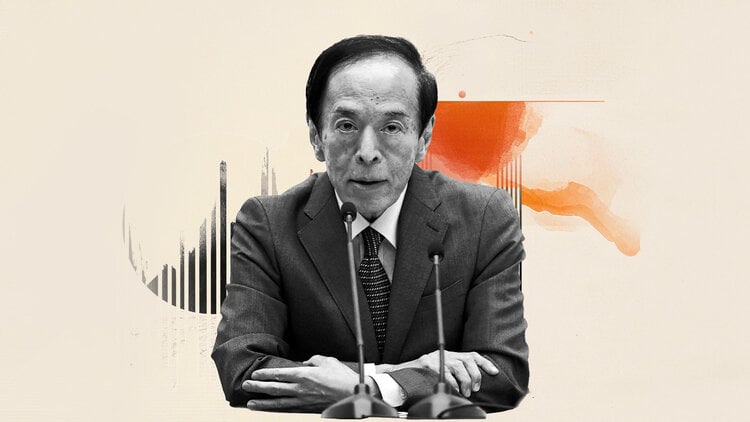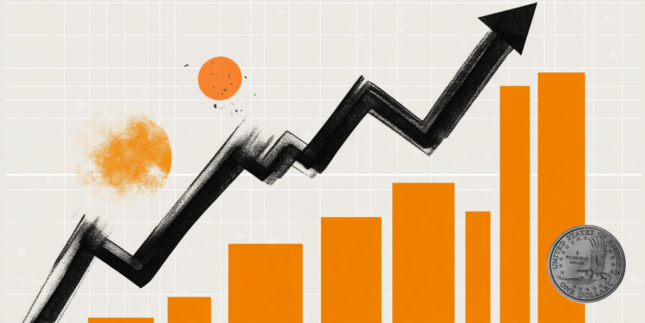Ueda Speech: BoJ Governor sheds light on policy path after maintaining interest rate
Bank of Japan (BoJ) Governor Kazuo Ueda is addressing a press conference to explain the reasons behind holding the key interest rate at 0.50% on Thursday.
The Japanese Yen keeps falling against the US Dollar, with USD/JPY adding 0.90% on the day to trade above 144.00, as of writing.
BoJ press conference key highlights
- Uncertainty from trade policies heightened sharply.
- BoJ expected to keep raising rates if economy, prices move in line with projections.
- Trade policies announced in each region likely to push down economies.
- Expect underlying inflation to cool down due to tariffs, slow global growth.
- Outlook is not as certain as it was before.
- Timing of underlying inflation to achieve 2% goal will be somewhat delayed.
- Expect US tariffs to be above the base 10% levied.
- There is a high possibility of revising our outlook depending on various assumptions and data because certainty of outlook is low.
- Uncertainty around tariff impact on economy remains high even after tariffs are finalized.
- Timing of next rate hike could be swayed a lot depending on impact of tariffs on economy.
- Timing of trend inflation does not necessarily correlate with timing of rate hike.
Economic Indicator
BoJ Press Conference
The Bank of Japan (BoJ) holds a press conference at the end of each one of its eight scheduled policy meetings. At the press conference the Governor of the BoJ communicates with media representatives and investors regarding monetary policy. The Governor talks about the factors that affect the most recent interest rate decision, the overall economic outlook, inflation, and clues regarding future monetary policy. Hawkish comments tend to boost the Japanese Yen (JPY), while a dovish message tends to weaken it.
Read more.Next release: Thu May 01, 2025 06:30
Frequency: Irregular
Consensus: -
Previous: -
Source: Bank of Japan
This section below was published on May 1 at 03:02 GMT to cover the Bank of Japan's monetary policy announcements and the initial market reaction.
The Bank of Japan (BoJ) board members decided to leave the short-term interest rate target unchanged in the range of 0.40%- 0.50% after concluding its two-day monetary policy review meeting on Thursday.
The decision came in line with the market expectations.
The Japanese central bank sat tight for the second consecutive meeting following a 25 basis points (bps) interest rate hike to 0.50% in January.
Summary of the BoJ policy statement
- BoJ makes policy decision by unanimous vote.
- Japan's economy likely to slow as trade policy impact slows global growth.
- Japan's economy to accelerate growth thereafter as overseas economy resumes moderate growth path.
- Underlying consumer inflation to stagnate, then accelerate thereafter as inflation expectations heighten, growth picks up.
- Exports, output likely to move on weak note.
- Nominal wage growth to remain elevated, continue to increase even after a period of slowdown.
- Consumption likely to sustain moderate uptrend.
- Exports, output likely to resume uptrend as overseas economies return to moderate growth
- Output gap likely to improve during the end of projected three-year period.
BoJ’s quarterly Outlook Report
- Japan's economic growth likely to moderate .
- Underlying consumer inflation likely to be at level generally consistent with 2% target in second half of projection period from fiscal 2025 through 2027.
- Uncertainty surrounding Japan’s economy, prices remain high.
- Important for the BoJ to carefully examine factors such as developments in economic activity.
- Important to judge whether the outlook will be realized without any preconception.
- Extreme uncertain how trade and other policies in each jurisdiction will evolve.
- Uncertain how overseas economic activities and prices will react to them.
- Japan's financial system has maintained stability on the whole.
- If disruptions in global logistics were to arise or moves to restructure supply chains were to take place and incur considerable costs, import prices could rise.
- This could in turn push down domestic demand.
- Households' defensive attitudes toward spending could strengthen further, and this could push down the economy.
- Moves to reflect price rises in wages could also weaken.
- There is also a possibility that both wages and prices will deviate upward from the baseline scenario.
- A prolonged period of high uncertainties regarding trade and other policies in each jurisdiction could lead firms to focus more on cost cutting.
- Will continue to raise policy rate if economy, prices move in line with its forecast.
- Will conduct monetary policy as appropriate from perspective of sustainably, stably achieving 2% inflation target.
- Real interest rates are at significant low levels.
- Board's core CPI fiscal 2025 median forecast at +2.2% vs +2.4% in January.
- Board's core CPI fiscal 2026 median forecast at +1.7% vs +2.0% in January.
- Board's core CPI fiscal 2027 median forecast at +1.9%.
- Board's real GDP fiscal 2025 median forecast at +0.7% vs +1.1% in January.
- Board's real GDP fiscal 2026 median forecast at +0.7% vs +1.0% in January.
- Board's real GDP fiscal 2027 median forecast at +1.0%.
BoJ’s report on risks
- Trade policy recently announced in each jurisdiction is likely to push down domestic and overseas economies through various channels.
- Introduction of wide-ranging tariffs is expected to impact global trade activity, uncertainties regarding policies including tariffs are likely to have large impact on business, household sentiment, global financial, capital markets.
- Import prices could rise, and push down domestic demand if disruptions in global logistics were to arise or moves to restructure supply chains were to take place and incur considerable costs.
- Prolonged period of high uncertainties regarding trade and other policies in each jurisdiction could lead firms to focus more on cost cutting, as a result moves to reflect price rises in wages could also weaken.
- With recent rise in food prices, such as rice price, attention is warranted on the possibility these rises may induce second-round effects on underlying CPI inflation through changes in household sentiment and inflation expectation.
Market reaction to the BoJ policy announcements
USD/JPY extends gains to test 143.35 in an immediate reaction to the Bank of Japan's (BoJ) rates on hold decision. The pair is currently trading 0.30% higher on the day at 143.33.
Japanese Yen PRICE Today
The table below shows the percentage change of Japanese Yen (JPY) against listed major currencies today. Japanese Yen was the weakest against the Australian Dollar.
| USD | EUR | GBP | JPY | CAD | AUD | NZD | CHF | |
|---|---|---|---|---|---|---|---|---|
| USD | 0.20% | 0.20% | 0.27% | -0.03% | -0.12% | -0.06% | 0.11% | |
| EUR | -0.20% | -0.01% | 0.06% | -0.27% | -0.33% | -0.25% | -0.11% | |
| GBP | -0.20% | 0.00% | 0.04% | -0.23% | -0.32% | -0.25% | -0.11% | |
| JPY | -0.27% | -0.06% | -0.04% | -0.30% | -0.36% | -0.35% | -0.21% | |
| CAD | 0.03% | 0.27% | 0.23% | 0.30% | -0.07% | -0.02% | 0.13% | |
| AUD | 0.12% | 0.33% | 0.32% | 0.36% | 0.07% | 0.07% | 0.22% | |
| NZD | 0.06% | 0.25% | 0.25% | 0.35% | 0.02% | -0.07% | 0.15% | |
| CHF | -0.11% | 0.11% | 0.11% | 0.21% | -0.13% | -0.22% | -0.15% |
The heat map shows percentage changes of major currencies against each other. The base currency is picked from the left column, while the quote currency is picked from the top row. For example, if you pick the Japanese Yen from the left column and move along the horizontal line to the US Dollar, the percentage change displayed in the box will represent JPY (base)/USD (quote).
This section below was published on April 30 at 23:00 GMT as a preview of the Bank of Japan Interest Rate Decision.
- The Bank of Japan is expected to hold interest rates at 0.50% in its May meeting.
- The uncertainty related to the United States-inspired trade war will be at the centre of the decision.
- The Japanese Yen could ease further with the BoJ’s anticipated decision.
The Bank of Japan (BoJ) will announce its decision on monetary policy after a two-day meeting on Thursday, and market participants widely anticipate policymakers will keep the benchmark interest rate on hold at 0.50%.
The focus will then shift to any signs of future monetary policy actions in the foreseeable future, alongside fresh economic projections, with the Japanese Yen (JPY) reacting in consequence.
What to expect from the BoJ interest rate decision?
As said, the Japanese central bank will likely maintain interest rates on hold at 0.50%, the highest level in 17 years. The BoJ delivered a 25 basis points (bps) hike in January amid progress towards their 2% inflation goal, but stayed pat in March.
Regarding projections, the BoJ forecasted 1.1% Gross Domestic Product (GDP) growth for FY 2025 and 1% for FY 2026 in January. Such a figure could suffer a revision amid the ongoing trade war, given that Japan is an export-dependent economy. Additionally, the median outlook for consumer inflation was 2.4% and 2% for the same two years.
Meanwhile, the United States (US)-inspired trade war continues, generating uncertainties about economic and inflation progress. Without progress in negotiations, Japan will likely see a contraction in exports and reduced capital investment, alongside an uptick in inflation. That means Japanese policymakers will likely opt to keep rates on hold until a clearer picture emerges.
Ahead of the announcement, Japanese Prime Minister Shigeru Ishiba announced in mid-April some emergency economic measures to alleviate any impact on industries and households affected by US levies. The package includes support for corporate financing and subsidies to lower petrol prices by 10 yen ($0.07) a litre (0.26 gallons), and partially cover electricity bills for three months from July.
Also, Japan's Economy Minister, Ryosei Akazawa, who is in charge of trade negotiations with the US, repeated that they expect the complete removal of levies. Even further, he clarified that the government is not considering sacrificing agricultural products for the sake of autos in the negotiations.
Finally, BoJ Governor Kazuo Ueda last week said the bank will continue to carefully monitor economic and price data in relation to interest rate policy. Ueda will hold a press conference after the announcement, and his words will be scrutinised for clues on future monetary policy decisions.
As a note of colour, the US published first-tier data on Wednesday. The ADP Employment Change report showed that the private sector added 62K new job positions in April, much worse than the 108K anticipated by market participants. The preliminary estimate of the US Q1 GDP also missed expectations, as the economy contracted at an annualized pace of 0.3% against the anticipated 0.4% expansion. The figures fueled speculation that the US faces a recession in the foreseeable future amid Trump’s tariffs, and financial markets turned risk-averse ahead of BoJ’s decision.
How could the Bank of Japan's interest rate decision affect USD/JPY?
Generally speaking, markets price in central bank’s decisions, meaning a decision in line with expectations should have a limited impact on the JPY. Policymakers are expected to repeat that they will remain data-dependent. Downward revisions to expectations, however, may weigh on the Japanese currency.
A scenario in which BoJ officials are optimistic about economic and inflation progress is quite unlikely, but it should result in a firmer JPY. Considering that, the USD/JPY will edge lower after BoJ’s decision.
Valeria Bednarik, FXStreet Chief Analyst, says: “The USD/JPY pair hovers around 143.00 in the American session before the BoJ’s announcement, advancing for a second consecutive day, but the bullish potential seems well-limited. In the daily chart, a bearish 20 Simple Moving Average (SMA) provides dynamic resistance at around 143.70, while technical indicators aim north, although within negative levels and with uneven strength. Even further, the 100 and 200 SMAs keep heading lower, far above the current level, reflecting the dominant bearish trend. A recent peak at 144.02 comes as the next relevant level to watch, with a steady advance above it required to anticipate a bullish extension in the following sessions.”
Bednarik adds: “Should the BoJ deliver a hawkish message, the risk for USD/JPY turns to the downside, with the 142.00 mark providing immediate support, ahead of the April 23 daily low at 141.35. Additional selling pressure exposes the year low at 139.88.”
Central banks FAQs
Central Banks have a key mandate which is making sure that there is price stability in a country or region. Economies are constantly facing inflation or deflation when prices for certain goods and services are fluctuating. Constant rising prices for the same goods means inflation, constant lowered prices for the same goods means deflation. It is the task of the central bank to keep the demand in line by tweaking its policy rate. For the biggest central banks like the US Federal Reserve (Fed), the European Central Bank (ECB) or the Bank of England (BoE), the mandate is to keep inflation close to 2%.
A central bank has one important tool at its disposal to get inflation higher or lower, and that is by tweaking its benchmark policy rate, commonly known as interest rate. On pre-communicated moments, the central bank will issue a statement with its policy rate and provide additional reasoning on why it is either remaining or changing (cutting or hiking) it. Local banks will adjust their savings and lending rates accordingly, which in turn will make it either harder or easier for people to earn on their savings or for companies to take out loans and make investments in their businesses. When the central bank hikes interest rates substantially, this is called monetary tightening. When it is cutting its benchmark rate, it is called monetary easing.
A central bank is often politically independent. Members of the central bank policy board are passing through a series of panels and hearings before being appointed to a policy board seat. Each member in that board often has a certain conviction on how the central bank should control inflation and the subsequent monetary policy. Members that want a very loose monetary policy, with low rates and cheap lending, to boost the economy substantially while being content to see inflation slightly above 2%, are called ‘doves’. Members that rather want to see higher rates to reward savings and want to keep a lit on inflation at all time are called ‘hawks’ and will not rest until inflation is at or just below 2%.
Normally, there is a chairman or president who leads each meeting, needs to create a consensus between the hawks or doves and has his or her final say when it would come down to a vote split to avoid a 50-50 tie on whether the current policy should be adjusted. The chairman will deliver speeches which often can be followed live, where the current monetary stance and outlook is being communicated. A central bank will try to push forward its monetary policy without triggering violent swings in rates, equities, or its currency. All members of the central bank will channel their stance toward the markets in advance of a policy meeting event. A few days before a policy meeting takes place until the new policy has been communicated, members are forbidden to talk publicly. This is called the blackout period.
Forex News
Keep up with the financial markets, know what's happening and what is affecting the markets with our latest market updates. Analyze market movers, trends and build your trading strategies accordingly.






















